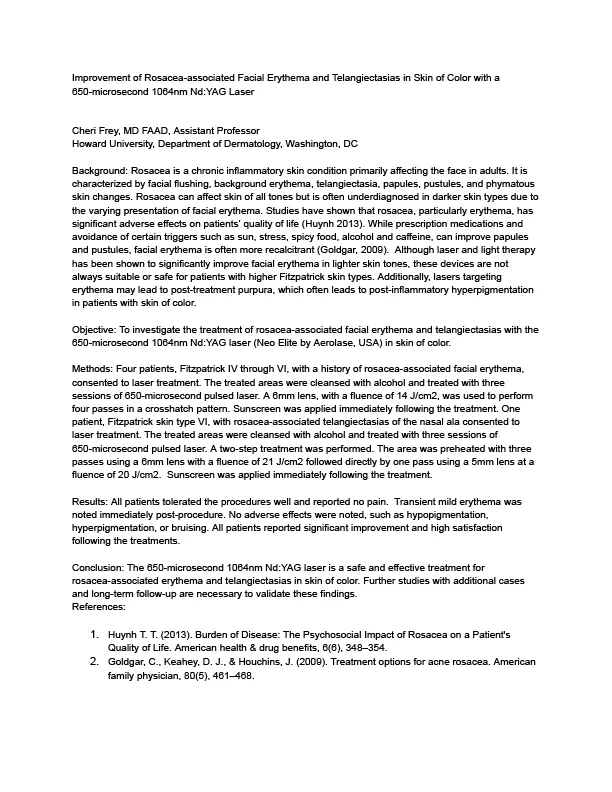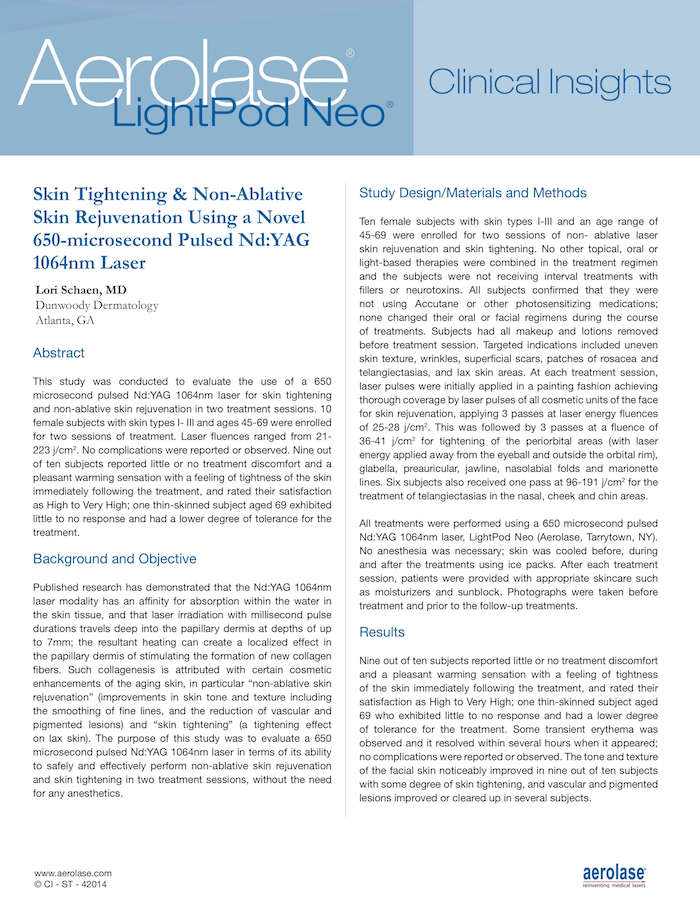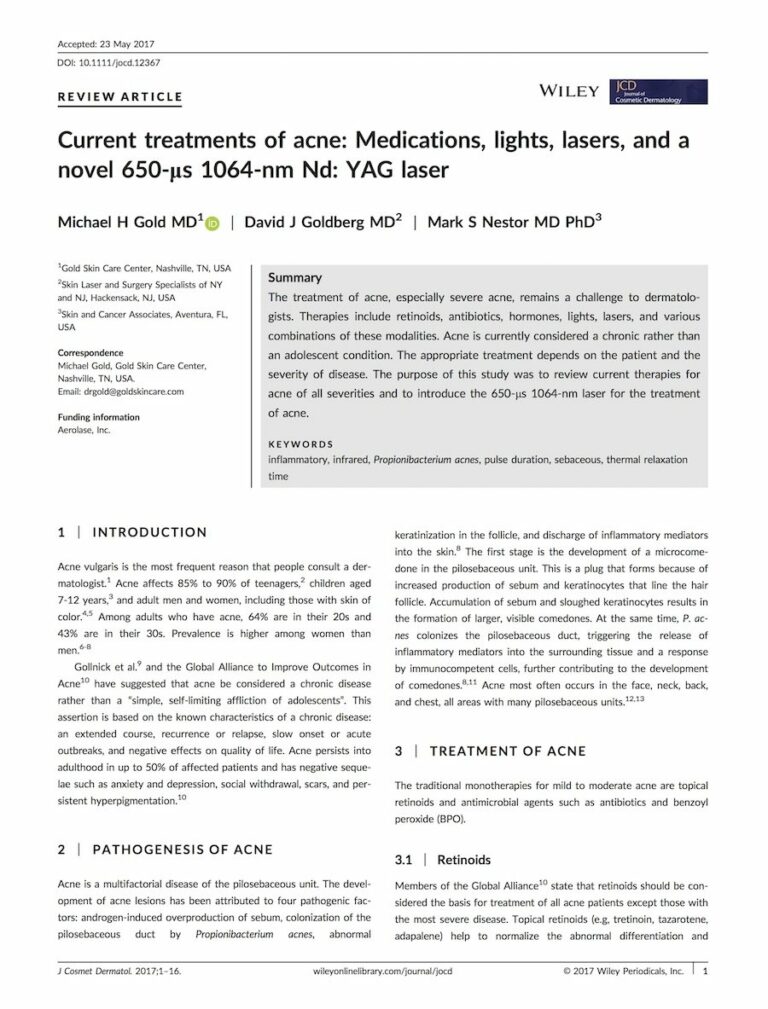Cheri Frey, MD FAAD, Assistant Professor
Howard University, Department of Dermatology, Washington, DC
Background
Rosacea is a chronic inflammatory skin condition primarily affecting the face in adults. It is characterized by facial flushing, background erythema, telangiectasia, papules, pustules, and phymatous skin changes. Rosacea can affect skin of all tones but is often underdiagnosed in darker skin types due to the varying presentation of facial erythema. Studies have shown that rosacea, particularly erythema, has significant adverse effects on patients’ quality of life (Huynh 2013). While prescription medications and avoidance of certain triggers such as sun, stress, spicy food, alcohol and caffeine, can improve papules and pustules, facial erythema is often more recalcitrant (Goldgar, 2009). Although laser and light therapy has been shown to significantly improve facial erythema in lighter skin tones, these devices are not always suitable or safe for patients with higher Fitzpatrick skin types. Additionally, lasers targeting erythema may lead to post-treatment purpura, which often leads to post-inflammatory hyperpigmentation in patients with skin of color.
Objective
To investigate the treatment of rosacea-associated facial erythema and telangiectasias with the 650-microsecond 1064nm Nd:YAG laser (Neo Elite by Aerolase, USA) in skin of color.
Methods
Four patients, Fitzpatrick IV through VI, with a history of rosacea-associated facial erythema, consented to laser treatment. The treated areas were cleansed with alcohol and treated with three sessions of 650-microsecond pulsed laser. A 6mm lens, with a fluence of 14 J/cm2, was used to perform four passes in a crosshatch pattern. Sunscreen was applied immediately following the treatment. One patient, Fitzpatrick skin type VI, with rosacea-associated telangiectasias of the nasal ala consented to laser treatment. The treated areas were cleansed with alcohol and treated with three sessions of 650-microsecond pulsed laser. A two-step treatment was performed. The area was preheated with three passes using a 6mm lens with a fluence of 21 J/cm2 followed directly by one pass using a 5mm lens at a fluence of 20 J/cm2. Sunscreen was applied immediately following the treatment.
Results
All patients tolerated the procedures well and reported no pain. Transient mild erythema was noted immediately post-procedure. No adverse effects were noted, such as hypopigmentation, hyperpigmentation, or bruising. All patients reported significant improvement and high satisfaction following the treatments.
Conclusion
The 650-microsecond 1064nm Nd:YAG laser is a safe and effective treatment for rosacea-associated erythema and telangiectasias in skin of color. Further studies with additional cases and long-term follow-up are necessary to validate these findings.
References
1. Huynh T. T. (2013). Burden of Disease: The Psychosocial Impact of Rosacea on a Patient’s Quality of Life. American health & drug benefits, 6(6), 348–354.
2. Goldgar, C., Keahey, D. J., & Houchins, J. (2009). Treatment options for acne rosacea. American family physician, 80(5), 461–468.




